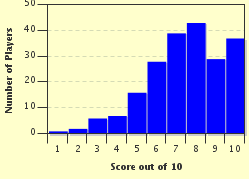Quiz Answer Key and Fun Facts
1. Janissaries defeated STOP Suleiman retreats Constantinople STOP Vienna stands STOP Europe safe STOP. What empire failed to take Austria in 1529, abandoning forever its efforts to conquer and occupy Europe?
2. "Battle of Nations" STOP 90,000 casualties STOP Bonaparte retreats STOP. In October 1813, two years before his final defeat at Waterloo, which massive battle forced France's Emperor Napoleon to flee to Paris, then to abdicate and be exiled to Elba?
3. Hoplite phalanx crushes enemy STOP Miltiades prevails STOP Pheidippides speeds news to Athens STOP. On what battlefield did troops from Athens and Plataea repulse the first Persian invasion of Greece in 490 BC?
4. Superpowers clash STOP Orontes River STOP over 5,000 chariots 60,000 troops STOP outcome inconclusive STOP Muwatalli II claims victory STOP Ramses II claims victory STOP. What battle fought in 1274 BC spurred the first known international peace treaty and is the first major historical battle for which tactics are recorded?
5. Bastard invades Sussex STOP Battle at Battle STOP Comet appears STOP Godwinson shot in eye STOP. What battle is described in this telegram and shown in the Bayeux Tapestry?
6. A telegram in 1415 might have read: Agincourt STOP Saint Crispin's Day victory STOP English longbows save day STOP Henry V winner STOP. Another telegram in 1429 might say: Siege of Orleans STOP Joan of Arc triumphs STOP French Dauphin in STOP English Henry VI out STOP. During what war did these events take place?
7. Washington defeats Cornwallis STOP France backs a winner STOP British surrender STOP American War of Independence succeeds STOP Treaty of Paris to follow STOP. In what 1781 conflict did a combined American and French army prevail over British forces in the final battle of the Revolutionary War?
8. French forces surrounded STOP artillery fire from hills STOP trench warfare STOP monsoon makes mud STOP hedgehog fails STOP Geneva Accords signed STOP French Indochina history STOP. What decisive 1954 battle does this telegram describe?
9. Lee takes war north STOP Order #191 found in field STOP America's bloodiest day STOP outnumbered Confederates blocked at Sharpsburg STOP over 23,000 dead or wounded STOP Lincoln signs Emancipation Proclamation STOP. What bloody American Civil War battle in 1862 ended inconclusively but had major political results?
10. City on Volga devastated STOP German forces surrounded by Red Army STOP mass starvation STOP bitter cold STOP 199 day battle STOP 1-2 million military and civilian casualties STOP. What 1942-43 battle was a huge propaganda loss for Hitler and has been called a turning point of World War II on the Eastern Front?
Source: Author
nannywoo
This quiz was reviewed by FunTrivia editor
bloomsby before going online.
Any errors found in FunTrivia content are routinely corrected through our feedback system.

